Jurgen Knoblich
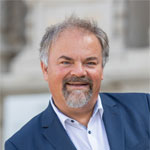 | Juergen Knoblich is heading the Institute of Molecular Biotechnology in Vienna. He is a developmental neuroscientist studying human brain development and psychiatric disorders. His group has developed a method for growing human brain tissue in the lab. They can recapitulate human embryonic brain development during the first trimester and analyze the developmental defects leading to neurological disorders. |
Masayo Takahashi
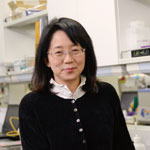 | Masayo Takahashi received her M.D. in 1986, and her Ph.D. in 1992, from Kyoto University. After an assistant professorship in the Department of Ophthalmology, Kyoto University Hospital, she moved to the Salk Institute in 1996, where she discovered the potential of stem cells as a tool for retinal therapy. She returned to Kyoto University Hospital in 1998, and was appointed associate professor at the Translational Research Center in the same hospital in 2001. She joined the RIKEN CDB (currently RIKEN BDR) as a Team Leader of the Lab for Retinal Regeneration in 2006. In 2013, her team launched a pilot clinical study of autologous iPS cell-derived RPE cell sheets for exudative aged-related macular degeneration (AMD), and performed the first RPE cell sheet graft transplantation in September 2014. In August 2019, she started a new carrier as a president of start up company; Vision Care Inc. (VC’), that will collaborate with RIKEN and Kobe Eye Center. Her aim is to understand these diseases at a fundamental level and develop retinal therapies. |
Cantas Alev
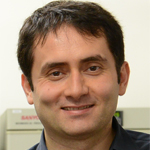 | Dr. Cantas Alev obtained his PhD and Doctor of Medicine (Dr.med.) from the Ruhr University Bochum in Germany, where he studied medicine and biochemistry. He did his post-doctoral work on early embryonic development with a focus on mesoderm induction and patterning in the laboratory of Dr. Guojun Sheng at the RIKEN Center for Developmental Biology (CDB) in Kobe, Japan, before moving to the Center for iPS Cell Research and Application (CiRA). At CiRA he worked on pluripotent stem cell (PSC)-based in vitro model systems of human mesoderm development, successfully establishing an in vitro model of the human segmentation clock (Matsuda, Yamanaka et al., Nature 2020). In his new lab at the Institute for the Advanced Study of Human Biology (ASHBi) at Kyoto University he is continuing to work on the in vitro reconstitution of human and non-human amniote embryonic development from pluripotent stem cells. His lab focuses foremost on the in vitro recapitulation and analysis of human mesoderm development, mesendodermal organogenesis and mesoderm-driven complex morphogenetic processes, with the overall aim to increase our still limited understanding of human development and disease. |
Anne Beghin
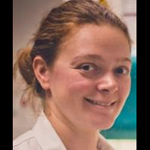 | Anne Beghin is a multidisciplinary PhD scientist with fifteen years of extensive research experience in pharmaceutical companies, microscopy platforms and academia. She is author of patent and publications in which key words were 3D culture, advanced microscopy, image analysis and High Content Screening. She worked closely with pharmaceutical industries such as Sanofi to develop new screening approach based on super resolution microscopy such as Single Molecule Light Microscopy (HCS-SMLM). In the MechanoBiology institute of Singapore (MBI), she is at the head of the project linking Organoids technology, advanced imaging and High Content Screening. This work has already resulted in a patent. Based on this innovation, the lab is interested to use organoids to screen compounds libraries and to explore all their possibilities in term of disease models and regenerative medicine, in collaboration with private and academia partners. |
J. Gray Camp
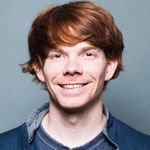 | Gray Camp received a B.S. degree in Chemistry from Wofford College and a Ph.D. degree in Genetics and Molecular Biology, with a focus on Developmental Biology, in 2012 from the University of North Carolina at Chapel Hill. He performed post-doctoral work at Stanford University and the Max Planck Institute for Evolutionary Anthropology. Currently, he is a Group Leader at the Institute of Ophthalmology Basel, an affiliate of the University of Basel, University Hospital Basel, and Novartis. His group uses stem cells, organoids, and single-cell genomics to explore human development, disease, and evolution. |
Miki Ebisuya
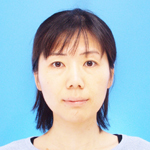 | Miki Ebisuya did her under graduate and PhD research at Kyoto University, Japan. After getting her PhD in 2008, she became a group leader at Kyoto University in 2009. Her lab moved to RIKEN in 2013, and then moved again to EMBL Barcelona, Spain, in 2018. The research interest of her group is to reconstitute developmental mechanisms in cell culture. |
Hironobu Fujiwara
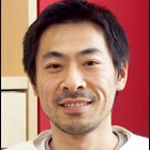 | Hironobu Fujiwara obtained his PhD in 2003 from Osaka University under the supervision of Professor Kiyotoshi Sekiguchi. At that time, he worked on the purification and characterization of human laminin-8 extracellular matrix protein. He then obtained a postdoctoral position in Kiyotoshi Sekiguchi's lab (Osaka University/JST ERATO project: 2003–2007) studying the role of the basement membrane in mouse embryoid body development and gastrulation. In 2007, he moved to work as a postdoctoral fellow in Fiona Watt's lab (Cancer Research UK Cambridge: 2007-2012) where he discovered that the basement membrane of hair follicle stem cells functions as a muscle cell niche. He was appointed to a Team Leader (Lab Head) at the RIKEN Center for Developmental Biology (CDB) in October 2012, in which the institute was reorganized as RIKEN Center for Biosystems Dynamics Research (BDR) in 2018. He is also a CREST researcher (PI) of the Japanese Science and Technology Agency (JST) in the strategic research area "multicellular interaction" (2019–2025). He also holds a concurrent post as Adjunct Professor at the Graduate School of Medicine of Osaka University, Adjunct Associate Professor at the Graduate School of Life Science of Hyogo University and Graduate School of Science and Technology of Kwansei Gakuin University. |
Mingxia Gu
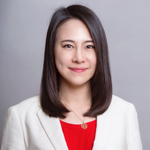 | Dr. Gu is an Assistant Professor of Pediatrics at the Center for Stem Cell and Organoid Medicine (CuSTOM), Cincinnati Children’s Hospital. |
Michael A. Helmrath
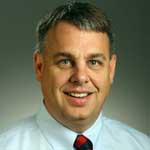 | As a pediatric surgeon scientist, Dr. Helmrath has established a large multidisciplinary team dedicated to clinical, translational, and basic science research focused on human diseases. Clinically, he is dedicated to patients with intestinal diseases and obesity. In his laboratory, he focuses on characterizing intestinal stem cells during intestinal adaptation and developing intestinal regenerative strategies. By combining his current roles as Director of Surgical Research, Director for the Center for Bariatric Research and Innovation, Surgical Director of the Intestinal Rehabilitation Program, and Director of Clinical Translation for Center for Stem Cell & Organoid Medicine (CuSTOM), his strong basic science research background further allows him to translate human GI conditions to the laboratory to develop highly innovative approaches to treat intestinal diseases. |
Akitsu Hotta
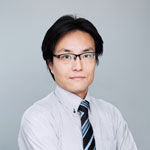 | Akitsu Hotta is a Junior Associate Professor and Principle Investigator at Center for iPS cell Research and Application (CiRA), Kyoto University. He obtained his Ph.D. of bioengineering in 2006 from Nagoya University, by studying transgenic chicken to produce human antibodies in their eggs by using retroviral and lentiviral vectors. As a Postdoctoral fellow, he joined the laboratory of Dr. James Ellis in the Hospital for Sick Children (SickKids), Toronto, Canada and developed the EOS pluripotency reporter vector to aid isolation of rarely reprogrammed iPS cells [Hotta A et al., Nat Methods, 2009]. In 2010, he joined CiRA as an Assistant Professor, Kyoto University and started his own laboratory to advance iPS cell and gene therapy applications by utilizing fine genetic engineering tools. In 2015, he demonstrated that CRISPR-Cas9 genome editing could be used to repair the out-of-frame mutation of Dystrophin gene, which is the root cause of Duchenne muscular dystrophy, in patient-derived iPS cells [Li HL et al., Stem Cell Reports, 2015]. Furthermore, he also demonstrated recently that selective disruption of multiple HLA genes by CRISPR-Cas9 could enhance cellular immunocompatibility against killer T cells and NK cells, which will greatly facilitate dissemination of iPS cell therapy applications [Xu H et al., Cell Stem Cell, 2019]. He continues to strive on development of novel genetic tools to realize iPS cell therapy and gene therapy applications for intractable diseases. |
Ryoichiro Kageyama
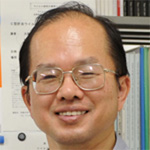 | Ryoichiro Kageyama received his M.D. in 1982 from Kyoto University and his Ph.D. in 1986 from the same institution for his work on the structural characterization and transcriptional control of the renin-angiotensin-kinin system. After spending a few years as a postdoctoral fellow at the National Cancer Institute in the United States, he returned to Japan and was appointed Assistant Professor in 1989 and Associate Professor in 1991 in the Faculty of Medicine of Kyoto University. There, he began looking at bHLH genes, such as Hes1 and Math1, and analyzed their roles in neural development. He then moved to Kyoto University’s Institute for Virus Research (currently, Institute for Frontier Life and Medical Sciences) to assume a full professorship in 1997, continuing his study on the roles of bHLH genes in neural development. In 2006-2010, he was appointed Director of the same institute. |
Roger D. Kamm
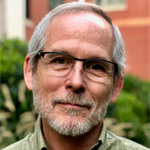 | Roger D. Kamm is the Cecil and Ida Green Distinguished Professor of Biological and Mechanical Engineering at MIT, where he has served on the faculty since 1978. Kamm has long been instrumental in developing research activities at the interface of biology and mechanics, formerly in cell and molecular mechanics, and now in engineered living systems. Current interests are in developing models of healthy and diseased organ function using microfluidic technologies, with a focus on vascularization. Kamm has fostered biomechanics as Chair of the US National Committee on Biomechanics (2006-2009) and of the World Council on Biomechanics (2006-2010). Kamm currently directs the NSF Science and Technology Center on Emergent Behaviors of Integrated Cellular Systems. He has received numerous awards including the ASME Lissner Medal (2010) and the ESB Huiskes Medal (2015), both for lifetime achievements, and is the inaugural recipient of the ASME Nerem Medal for mentoring and education. In 2020 he received the Shu Chien Award from the Cell and Molecular Engineering Division of BMES. He was elected to the National Academy of Medicine in 2010. Kamm is co-founder of two companies, Cardiovascular Technologies and AIM Biotech, a manufacturer of microfluidic systems for 3D culture. |
Cody Kime
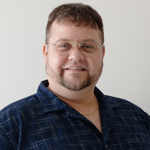 | Dr. Cody Kime is a cell program hacker trained in molecular, stem cell, and developmental biology, and is primarily known for pioneering systems in the emerging field of Synthetic Embryology. He has worked in the lab of Shinya Yamanaka as a California Institute of Regenerative Medicine (CIRM) Bridges Scholar and became a Doctor of Medical Sciences with Masayo Takahashi at RIKEN where he leads a cell reprogramming team. Dr. Kime is laser focused on the fundamental basis of epigenetic reprogramming and developmental cell identity at the molecular, genetic, cellular, and tissue levels of control. In that multidisciplinary realm he creates new stem cell and reprogramming systems to expand unprecedented research in embryogenesis, epigenetic plasticity, and future technology-oriented medicine. |
Matthias Lutolf
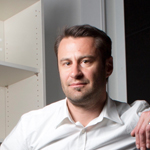 | Professor Matthias Lutolf is Director of the Laboratory of Stem Cell Bioengineering at Ecole Polytechnique Fédérale de Lausanne (EPFL), Switzerland. His highly innovative and cross-disciplinary research program is focused on the development of bio- and tissue-engineering strategies for improving organoid culture and enabling its translation to real-life applications. |
Mitsuru Morimoto
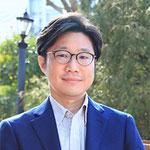 | Mitsuru Morimoto is Team Leader of the Laboratory for Lung Development and Regeneration at the RIKEN Center for Biosystems Dynamics Research (BDR), in Japan. His lab focuses on identifying analogies in cell signaling among development, regeneration and diseases of the respiratory system using mouse genetics and in vitro culture for multicellular systems such as organoids. He and his group have discovered that Notch signaling regulates six different lung cell types during development (Morimoto et al, 2010, 2012; Noguchi et al, 2015; Tsao et al, 2016). His lab also investigates tracheal tube morphogenesis regulated by synchronized mesenchymal cell polarity in vivo and reconstruction of tracheal tissue from pluripotent stem cells in vitro (Kishimoto et al, 2018; 2020). |
Mitinori Saitou
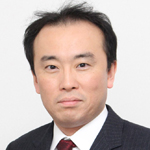 | Mitinori Saitou received his M.D. and Ph.D. (under Shoichiro Tsukita) in the Kyoto University, performed his postdoctoral work in the Gurdon Institute (with Azim Surani), and was team leader at the RIKEN Center for Developmental Biology (currently RIKEN BDR). Mitinori Saitou is now Professor at the Kyoto University Institute for Advanced Study and Director of the Institute for the Advanced Study of Human Biology. His work focuses on the mechanism and reconstitution in vitro of germ cell development in mammals including humans. |
Hideya Sakaguchi
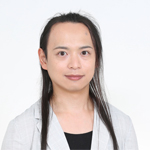 | Hideya Sakaguchi received his M.D. from Kumamoto University in 2008 and worked as a neurologist for several years. In 2012, he joined the Laboratory for Organogenesis and Neurogenesis (Sasai lab) at RIKEN Center for Developmental Biology and received his Ph.D. from the Kyoto University in 2016 for his work on 3D hippocampal and choroid plexus tissue induction from human embryonic stem cells which is currently known as hippocampal/choroid plexus organoids. He moved to the Center for iPS Cell Research and Application, Kyoto University (Jun Takahashi lab) for his postdoctoral training, and succeeded in induction of spinal cord organoids, detailed functional analysis of neural networks derived from cerebral organoids, transplantation of cerebral organoids into animal brains, and looking into research ethics related to possible emergence of consciousness in cerebral organoids. He then pursued further postdoctoral training working with Dr. Fred Gage at The Salk Institute, and in June 2020, he was appointed to his current position as the leader of Neural Organogenesis Research under the RIKEN BDR-Otsuka Pharmaceutical Collaboration Center. His laboratory focuses on understanding the principle of generation of complex 3D neural tissues and applied studies using hippocampal organoids. |
Toshiro Sato
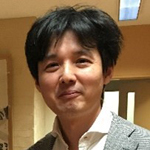 | Dr. Toshiro Sato is Professor of Department of Organoid Medicine in Keio University School of Medicine, Tokyo. He obtained his MD and PhD from Keio University School of Medicine and completed his residency program in Department of Gastroenterology, Keio University Hospital. In 2007, he joined the Hans Clevers lab, Hubrecht Institute, Utrecht to investigate intestinal stem cells, where he developed the organoid culture system for adult intestinal stem cells. Dr. Sato established his own laboratory in the Keio University since 2011 and focus on disease modeling of human gastrointestinal diseases. |
Hans-Willem Snoeck
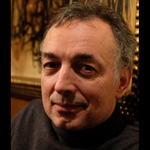 | Dr. Snoeck is Professor of Medicine at the Department of Medicine (in Microbiology and Immunology) of the Columbia Vagelos College of Physicians and Surgeons. Before that, he was a Professor at the Department of Oncological Sciences at the Mount Sinai School of Medicine, New York. He obtained his MD and PhD and did his residency and fellowship in Internal Medicine and Hematology at the University of Antwerp, Belgium. Trained as a clinical hematologist with a focus on bone marrow transplantation, he developed a research program in hematopoietic stem cell biology. The hematopoietic stem cell program was expanded into directed differentiation of human pluripotent stem cells into derivatives of the anterior foregut endoderm, leading to the generation of lung and airway cells and 3D lung organoids that are used for disease modeling and the development of regenerative medicine for lung disease. |
Minoru Takasato
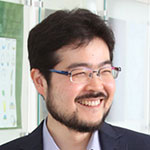 | Minoru Takasato is Team Leader of the Laboratory for Human Organogenesis at the RIKEN Center for Biosystems Dynamics Research (BDR), where he heads the kidney regeneration project. He received his BSc. in anthropology from the University of Tokyo, Japan in 2002, and completed his Ph.D. focusing on the study of mouse kidney development in the same university in 2008 before joining Professor Little’s laboratory as a postdoctoral fellow at Institute for Molecular Bioscience, University of Queensland in 2009 and Murdoch Children’s Research Institute, Australia, in 2015. He is an expert in the directed differentiation of human pluripotent stem cells to kidney with his most recent work being published in Nature Cell Biology (2014) and Nature (2015). He started his own laboratory at RIKEN CDB (currently BDR) from 2016. His most recent studies describe the generation of mini-kidneys from induced pluripotent stem cells for use in drug screening and disease modelling. His work has drawn a great deal of international interest in kidney development and stem cell research fields. |
Takanori Takebe
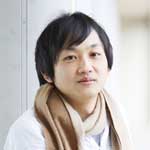 | Dr. Takebe is a Director of Commercial Innovation and Assistant Professor of Pediatrics at the Center for Stem Cell and Organoid Medicine (CuSTOM) at the Cincinnati Children’s Hospital Medical Center, USA. He is also a Professor at Tokyo Medical and Dental University, Japan. By recapitulating developmental principles, his lab utilizes human stem cells to self-organize into three-dimensional (3-D) structures reminiscent of human organs, so-called organoids with an ultimate goal of saving patients with no cure. |
Makoto Takeo
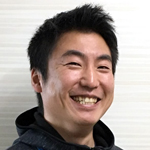 | Makoto Takeo is a Senior Scientist at the Laboratory for Organ regeneration, RIKEN BDR. He received a Ph.D. degree of Science in 2008 from Hokkaido University by studying the molecular mechanism of Enchytraeina. As a postdoctoral fellow, he jointed the laboratory of Dr. Mayumi Ito at New York University, New York, USA and worked on the regulation mechanism of stem cells in the regeneration of regeneration of hair follicle and digit tip of adult mouse. In 2016, he jointed the laboratory of Dr. Takashi Tsuji at RIKEN BDR and keep investigating to realize organ regeneration in human focusing on hair follicles, nail organ, and digit. |
Shoji Takeuchi
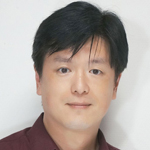 | Shoji Takeuchi received the B.E, M.E., and Dr. Eng. degrees in mechanical engineering from the University of Tokyo, Tokyo, Japan, in 1995, 1997, and 2000, respectively. He is currently a Professor in Department of Mechano-Informatics, Graduate School of Information Science and Technology, University of Tokyo. He has authored more than 190 peer-reviewed publications and filed over 70 patents. He has been recognized with numerous honors including Young Scientists' Prize, the Commendation for Science and Technology by the Minister of Education, Culture, Sports, Science and Technology in 2008, the JSPS prize from the Japan Society for the Promotion of Science in 2010, ACS Analytical Chemistry Young Innovator Awards in 2015, and UNESCO Netexplo Award Winner 2019. His current research interests include bioMEMS, 3D tissue fabrication, implantable devices, artificial lipid bilayer systems, and biohybrid machines. |
Jason Tchieu
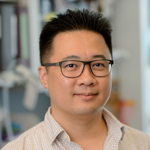 | Dr. Tchieu received his Ph.D. in from the University of California, Los Angeles, studying the process of X-chromosome reactivation during the reprogramming of somatic cells to iPSCs. He joined the lab of Lorenz Studer as a postdoctoral fellow at Memorial Sloan Kettering Cancer Center studying the mechanisms of human gliogenesis and completed his studies at in 2019. Currently, he is an Assistant Professor of Pediatrics in the Center for Stem Cell and Organoid Medicine at the Cincinnati Children’s Hospital Medical Center. His lab is interested in the mechanism of neurodevelopment and engineering novel strategies to generate nervous system cell types for regenerative medicine. A focus in the lab is investigating the mechanisms of neurodevelopmental and degenerative disorders using both monolayer and 3D cerebral organoids derived from patient specific induced pluripotent stem cells to explore cell type specific contribution to disease. |
Flora Vaccarino
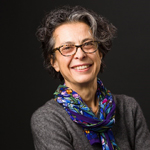 | Flora Vaccarino is the Harris Professor at the Child Study Center and Professor in the Department of Neuroscience at Yale University. Vaccarino leads a multidisciplinary research group that is working towards new directions for the study of mammalian brain development, particularly human, using stem cell biology and genomics as tools. Inspired by Sasai’s work, Vaccarino and her lab pioneered the generation of 3D brain organoids from induced pluripotent stem cells (iPSCs) (at the time called serum-free, floating embryoid body-like, quick aggregates (SFEBq), and showed that they recapitulate early fetal development of the human cerebral cortex (Mariani et al, 2012). They subsequently performed a comparison of the organoid’s transcriptome and noncoding element activity with isogenic postmortem human fetal cortex and characterized gene regulatory mechanisms that shape the earliest cell fate decisions in human cortical development. Her lab has generated an extensive collection of patient-derived iPSC lines to study altered gene regulatory mechanisms in Autism Spectrum Disorders. Her interests include human somatic genomic variation as a tool to study lineage specification in human embryonic development. She participates to the Brain Somatic Mosaicism Network (BSMN), a multi-site consortium that studies somatic mosaicism and its implication for neuropsychiatric diseases. |
James M. Wells
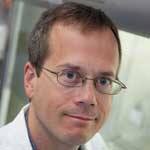 | Dr. Wells is an endowed professor of Pediatrics at the Cincinnati Children’s Hospital Medical Center in the Division of Developmental Biology. He is the Director for Basic Research in the Division of Endocrinology and is the Chief Scientific Officer of the Center for Stem Cell and Organoid Medicine (CuSTOM). |
Aaron M. Zorn
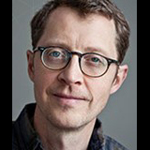 | Aaron M. Zorn, PhD in an endowed Perinatal Professor at Cincinnati Children’s Hospital in the Division of Developmental Biology. He is the Director of the Center for Stem Cell and Organoid Medicine (CuSTOM) and the Associate Director of the Children’s Digestive Health Center. The goal of the Zorn Lab is to elucidate the molecular mechanisms controlling embryonic development the respiratory and digestive systems. Using a combination of animal models, cutting-edge genomics and human pluripotent stem cells the Zorn lab has made important contributions to our knowledge of the signaling pathways and gene regulatory networks governing endoderm organogenesis. This work informs our understanding of congenital diseases and the ability to generate human organoids for regenerative medicine. |